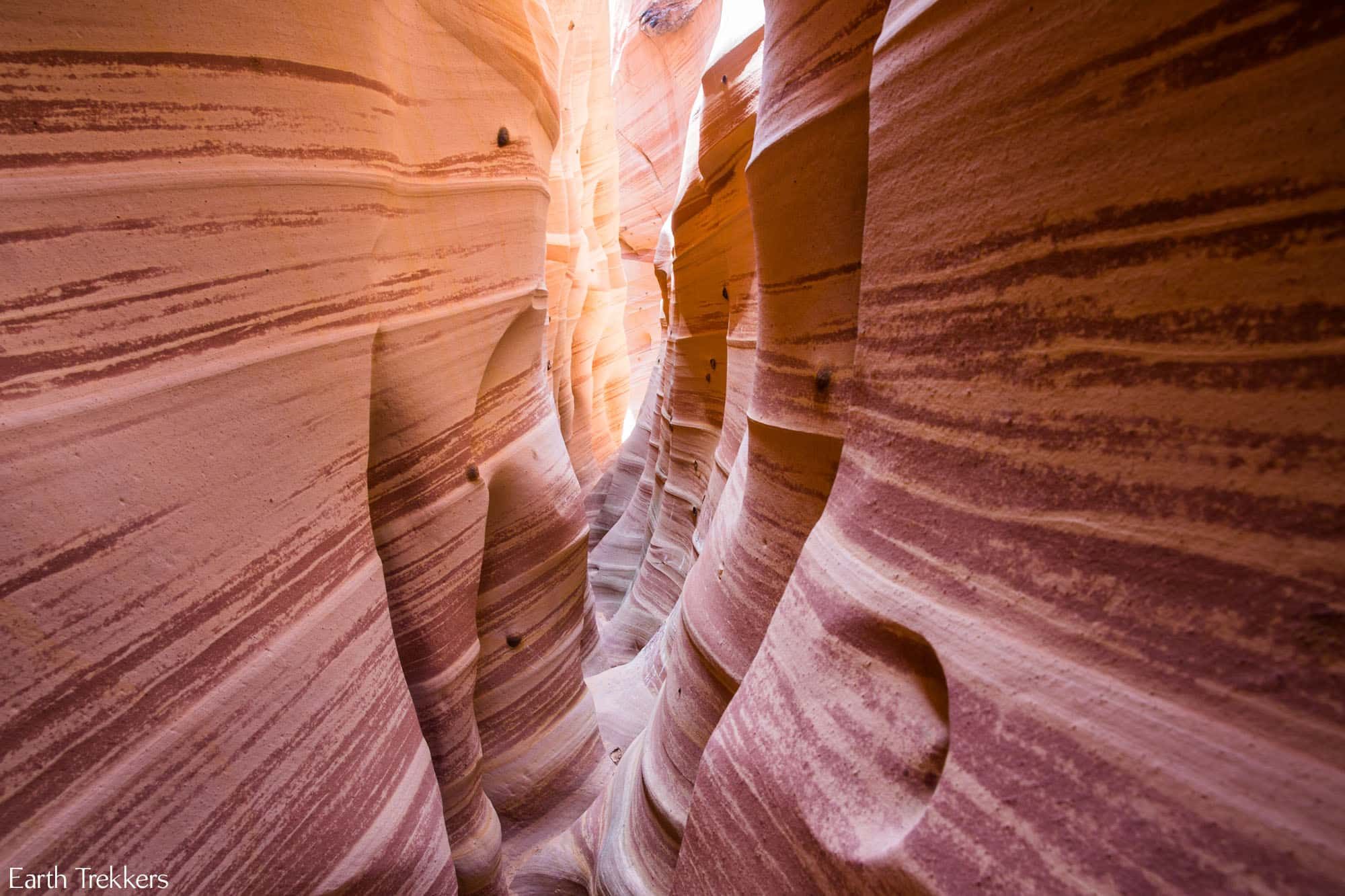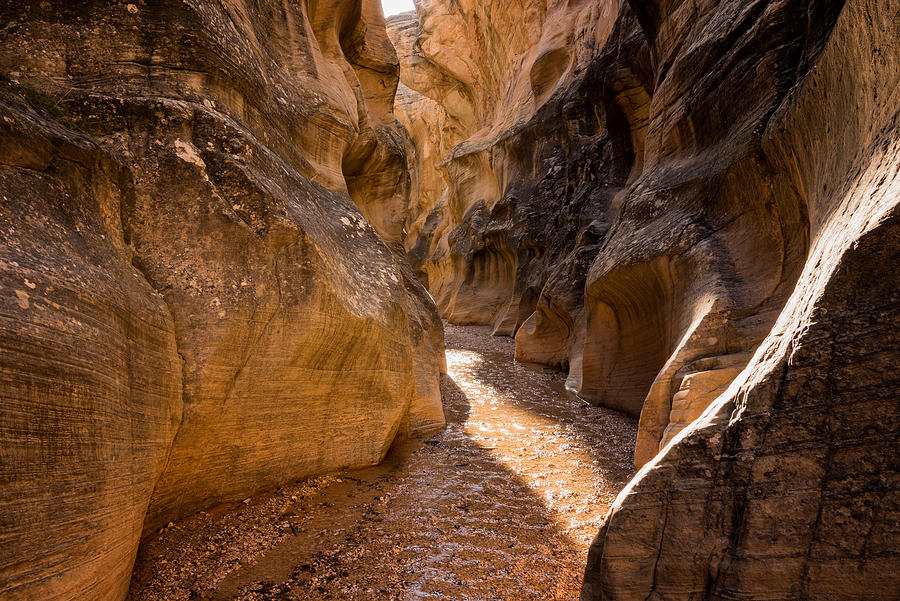Grand Canyon Slot
- A canyon is a deep cleft between escarpments or cliffs, often formed by rivers, weathering, erosion or tectonic activity.
- Smaller, steeper valleys of similar appearance to canyons are called gorges.
- The Grand Canyon is being eroded deeper at a rate of 1 foot every 200 years
Canyons make for striking sights that those who see them are sure to remember. Their distinctive steep cliff borders paired with the deep valleys that run through them make for beautiful views that are amongst the world's best when it comes to natural formations. There are a variety of popular canyons in the world, though few are as well recognized as the Grand Canyon located in the US state of Arizona, which covers a massive area of nearly 2000 square miles. This canyon is massive, it stretchs for about 277 miles long, is up to 18 miles wide, and has a depth of over a mile at certain points.
So, how are these amazing natural wonders formed? Below is a discussion on the same.
Etymology And Formation Of Canyons
The term canyon, which refers to deep narrow valleys with steep sides, actually comes from the Spanish word cañon which means tube or pipe. This word is fitting as it matches how canyons are often formed by the movement of running rivers going through them. This water flow erodes and cuts deep into the river bed over many years to create the canyons that we recognize today. Canyons are also sometimes called gorges, though this term more accurately refers to smaller, narrower, and steeper valleys of similar appearance.
Play the Merkur Gaming slot Grand Canyon in play for fun mode, read our review, leave a rating and discover the best deposit bonuses, free spins offers and no deposit bonuses available for the Grand Canyon game in November. We were caught in a flash flood in one of Utah's most famous slot canyons.

Most Common Way Of Canyon Formation
There are several ways that canyons can be formed. Swift streams of water that run through rocks are the most common cause of the largest and most famous cliff valleys. Typically this occurs in arid, meaning dry, or semiarid lands where rivers are fed by rain and melting snow transferred from wetter regions upstream. Canyons are more common in these dry areas because physical weathering typically has a more localized effect in arid areas. Canyon walls then form in their steep and angular way because compared to their centers they do not get as much of the frequent and large amounts of water flowing through and thus are not nearly as worn and softened. Basically, the water pressure of the river digs deep into the surface below it, while simultaneously carrying away the sediments further downstream, to create the distinctive deep and narrow channels so characteristic of canyons. The rock layers are worn away until they reach an elevation that matches that of the area where the water drains, meaning canyons typically crop up when the river's headwaters and estuary, meaning a partially enclosed body of water with access to the sea, are at significantly different heights allowing for the pressure to push the river bed down further and further.
An example of a river formed canyon is the Tibetan Yarlung Zangbo Grand Canyon, located in southwestern China and created over millions of years by the Yarlung Zangbo River. This canyon is even deeper than the Grand Canyon, diving down 17,490 feet and stretching as long as 310 miles. Canyons can both have water in them or be completely dry.

Other Types Of Canyons And Their Formation
Canyons can also be formed as rifts between two mountain peaks, like those in ranges across the Rocky Mountains, Alps, and the Himalayas. In these situations, a river or stream can also be responsible for carving out the splits between these towering mountains. Canyons within mountainous areas that have only one side with an opening are referred to as box canyons.
Another type of canyon is the submarine canyon, which refers to those located beneath the sea that cut across continental shelves and down continental slopes. Many of these canyon heads were cut through by rivers that existed in the years past when the sea level was several hundred feet lower than it is today. The continuations of these canyons further down the slopes are theorized to have been created and maintained by deep water currents containing large amounts of sediments or by avalanche-esque movements of minerals and rock that suddenly drop down from the upper parts of the submarine canyons.
Other aspects that contribute to canyon formation include weathering and erosion. For instance, water can seep into rock cracks, then freeze and expand into ice that forces the cracks open and erodes more stone. Heavy rainfall can also cause water to rush down these cracks eroding more rock. Eventually, as these materials begin to crumble and fall the canyon becomes wider at the top than at the bottom. Slot canyons can sometimes form as a result. These are tiny canyons that can be less than 3 feet wide but hundreds of feet deep.
Lastly, tectonic uplift can be responsible for forming canyons. This occurs when tectonic plates move and crash together, in the process raising a landmass. These elevated lands can then be cut through by rivers to form canyons.
A slot canyon is a long, narrow, deep and tortuous channel or drainageway with sheer rock walls that are typically eroded into either sandstone or other sedimentary rock. A slot canyon has depth-to-width ratios that typically exceed 10:1 over most of its length and can approach 100:1. The term is especially used in the semiarid western United States, including the Colorado Plateau region. Slot canyons are subject to flash flooding and commonly contain unique ecological communities that are distinct from the adjacent, drier uplands.[1] Some slot canyons can measure less than 1 metre (3 ft) across at the top but drop more than 30 metres (100 ft) to the floor of the canyon.
Grand Canyon Slot Canyon
Many slot canyons are formed in sandstone and limestone rock, although slot canyons in other rock types such as granite and basalt are possible. Even in sandstone and limestone, only a very small number of streams will form slot canyons due to a combination of the particular characteristics of the rock and regional rainfall.
Slot canyons around the world[edit]
Slot canyons are found in many parts of the world, predominantly in areas with low rainfall. Some of the best-known slot canyons are to be found in the Southwestern United States. Other significant areas include the Sierra de Guara in northern Spain, the Pyrenees on the border of France and Spain, and the Blue Mountains in New South Wales, Australia.

Australia[edit]
The largest known area of slot canyons in Australia is in the Blue Mountains, west of Sydney. They occur in a narrow band of sandstone that runs roughly 30 kilometres (19 mi) from east to west, and about 100 kilometres (62 mi) from south to north. The majority of these canyons are in the Wollemi Wilderness, and are difficult to access. A small number are regularly visited by canyoners on weekends in summer. The Grand Canyon, near Blackheath, has a tourist track along its rim, but requires abseiling (rappelling) or swimming to visit fully.
Sandstone slot canyons can also be found in a few more remote parts of Australia, including Karijini National Park and the Bungle Bungles in Purnululu National Park, both in Western Australia, and Carnarvon Gorge in Queensland.
United States[edit]

Southern Utah has the densest population of slot canyons in the world with over one thousand slot canyons in the desert lands south of Interstate 70.[2] Utah's slot canyons are found in Zion National Park at The Narrows, along Canyonlands National Park's Joint Trail, throughout Capitol Reef National Park, within the San Rafael Swell and the Grand Staircase-Escalante National Monument, especially along the Escalante River drainage including Coyote Gulch. Many more slot canyons are located on public Bureau of Land Management and state-owned lands in southern Utah, in areas surrounding the aforementioned parks and monuments. Buckskin Gulch—one of the longest slot canyons in the world—begins in southern Utah and continues into northern Arizona within the Paria Canyon-Vermilion Cliffs Wilderness. Northern Arizona also has a high concentration of slot canyons including Antelope Canyon and Secret Canyon, which are two of the most famous slot canyons located near Page on land owned by the Navajo Nation. Slot canyons are also located in the valley between U.S. Route 89 and the Vermilion Cliffs in Arizona, and can be seen as one descends into the valley on U.S. 89, but these are on the Navajo reservation and are closed to the public. The Kasha-Katuwe Tent Rocks National Monument's slot canyon trail in New Mexico is unique as it was carved into tuff (volcanic ash). In California, several slot canyons are located within Death Valley National Park.
Drowning danger[edit]
Grand Canyon Wikipedia
Local as well as distant storms can cause dangerous flash flooding in slot canyons, and hikers should not enter them if there is any sign of rain in the surrounding area.[3] In many slot canyons, it can be miles before a safe exit or rescue is possible.
On August 12, 1997, eleven tourists, including seven from France, one from the United Kingdom, one from Sweden and two from the United States, were killed in Lower Antelope Canyon by a flash flood.[4][5] Very little rain fell at the site that day, but an earlier thunderstorm had dumped a large amount of water into the canyon basin, seven miles upstream. The lone survivor of the flood was tour guide Francisco 'Poncho' Quintana, who had prior swift-water training. At the time, the ladder system consisted of amateur-built wood ladders that were swept away by the flash flood. Today, ladder systems have been bolted in place, and deployable cargo nets are installed at the top of the canyon. A NOAA Weather Radio from the National Weather Service and an alarm horn are stationed at the fee booth.[6]
Gallery[edit]
The Siq and Al-Khazneh (the Treasury), Petra, Jordan
Taminaschlucht, Tamina River, Switzerland
The Narrows, Zion National Park, Utah
Kasha-Katuwe, New Mexico
See also[edit]
References[edit]
- ^ This article incorporates public domain material from the United States Department of Agriculture document: 'Soil Survey of Grand Staircase-Escalante National Monument Area, Parts of Kane and Garfield Counties, Utah'(PDF). U.S. Department of Agriculture, Natural Resources Conservation Service. p. 305. Retrieved September 30, 2019.
- ^Zion slot canyons
- ^'Safety Tips'. blm.gov. Bureau of Land Management. 2016-03-24. Archived from the original on 2016-09-30. Retrieved 1 November 2016.
- ^'Flash Flood Antelope Canyon'. Retrieved 2006-03-20.
- ^'Antelope Canyon'. Archived from the original on 17 March 2006. Retrieved 2006-03-20.
- ^Kramer, Kelly (2008). 'Man vs. Wild'. Arizona Highways. 84 (11): 23.
External links[edit]
Grand Wash Slot Canyon Hike
Media related to Slot canyons at Wikimedia Commons